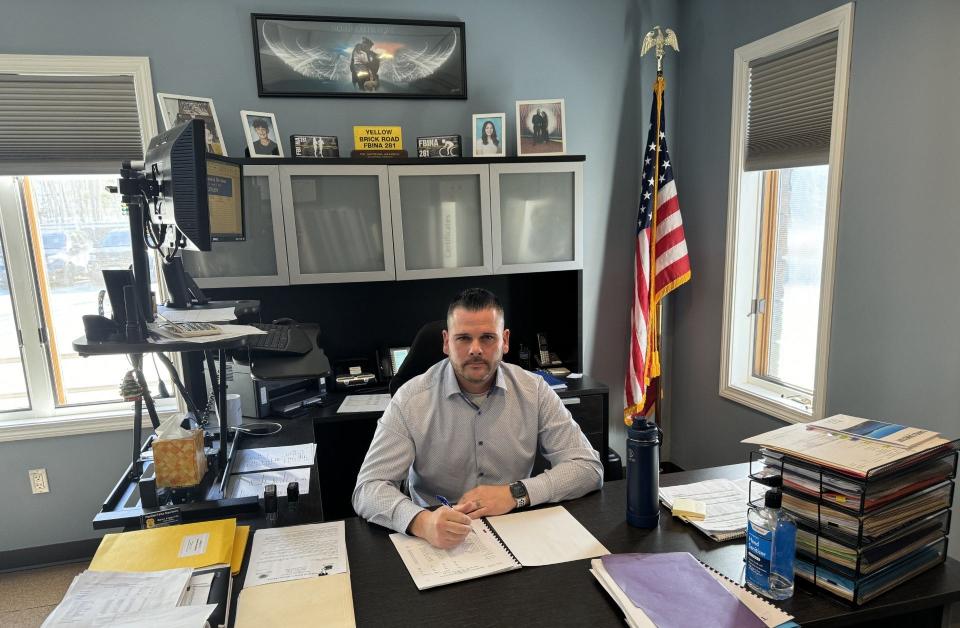Injury deaths in the study included intentional causes such as homicides and suicides as well as unintentional causes such as motor vehicle accidents. Injury deaths are calculated as the number of deaths that result from injuries per 100,000 people. Data was taken between 2016 and 2020.
Windham County had the highest fatal injury rate in Connecticut with an annual death rate of 90 per 100,000 residents. This exceeds Connecticut and the U.S. as a whole, which both have a fatal injury rate of 76 fatal injury deaths per 100,000 people. Windham County had a population of 116,418 as of the 2020 census.
New London County had the second highest fatal injury rate, with 88 per 100,000. The county’s population was 268,555 as of the 2020 census.

Fatal injuries increased from 2016-2020
During the years the data was taken, both Windham and New London counties saw increases in their fatal injury totals. In Windham County, there were 56 fatal injuries in 2016, 64 in 2017, 70 in 2018, 79 in 2019 and 84 in 2020.
New London County’s death total increased from 58 in 2016 to 78 in 2020. There were 65 fatal injuries in 2017, 69 in 2018, and 75 in 2019.
Ryan McKeen, a personal injury lawyer at Connecticut Trial Firm, believes that injury death rates might have increased due to more reckless driving.
More: Connecticut traffic deaths are up 16% over last year. Why do researchers blame COVID-19?
Not paying attention behind the wheel is the cause of many car crashes
“While cars have steadily gotten safer over the years, this has actually caused people to become less safe and less observant behind the wheel,” he said. “We rely far more on things like automatic braking and cameras to keep us safe while driving that we let our guard down. Not paying attention behind the wheel is the number one cause of all motor vehicle accidents.”
McKeen believes that Windham County has more injury deaths than New London County because of Windham’s rural landscape compared to New London’s mix of urban and suburban.


“Rural roads in Connecticut also tend to have far more blind turns, people speeding and less or no streetlights,” McKeen said.
Plainfield Police Chief Mario Arriaga said his department has seen its fair share of fatal injuries.
“We have our fair share of fatalities even from motor vehicle crashes to overdose deaths, unfortunately,” he said.
Arriaga, who has served in the department for 24 years, said they used to average five fatal motor vehicle deaths per year. He said that this number has decreased substantially in recent years.


Arriaga is unsure as to why the department has seen a decrease in fatal motor vehicle crashes.
“I know we try to do upticks with a grant in order to put officers out there to conduct motor vehicle enforcement to slow down operators,” he said. “I don’t know if that played a huge factor. I know it can help. Obviously, it’s a good thing that we don’t have as many fatals as we used to have over the years. But I don’t think that’s the reason as to why that is.”
Arriaga does believe that Plainfield’s rural roads make the town more susceptible to fatal motor vehicle crashes, which is why they have had officers out and about to slow down motorists.
Fatal injuries in Norwich
Norwich, with a population of just over 40,000, is the largest city in New London County.
Much like in Plainfield, Norwich Police Sgt. Chrisopher Chastang said his department responds to all kinds of fatal injuries.
From 2018 to 2022, the Norwich Police Department reported eight homicides, 84 overdose deaths, 23 suicides and two people who died after they drowned.
During the same time period, there were 6,082 accidents in Norwich involving motor vehicles as well as bicycles. This resulted in 1,270 injuries and 10 fatalities.
Norwich Police also reported two deaths from fires in Norwich between 2018 and 2022.
More: Police seek suspect in deadly Norwich shooting
Six of Connecticut’s eight counties exceed national average
Six of Connecticut’s eight counties exceed the nationwide and state average fatal injury rate. In addition to Windham and New London counties, Litchfield (86 per 100,000) and New Haven (85 per 100,000) counties exceed those rates.
While safer than other Connecticut counties, Middlesex (82 per 100,000) and Hartford (78 per 100,000) counties still exceed the nationwide and state average. McKeen said it is important to look at fatal injury data.
“Fatal injury data is important because it tells us where we need to improve,” he said. “We can’t fix anything if we don’t recognize the problem.”


Tolland and Fairfield counties were the only counties in the state where the fatal injury rates were below the national and state averages. With a fatal injury rate of 67 per 100,000, Tolland County was 11% safer than the Connecticut and nationwide average.
Fairfield’s fatal injury rate of 58 per 100,000 was as much as 24% below the national and state averages and 35% below the county fatal injury rate of Windham County.
A report from Connecticut Trial Firm was used in this story.
This article originally appeared on The Bulletin: Windham, New London counties have highest fatal injury rates in Conn.
